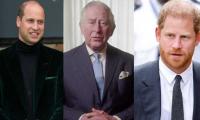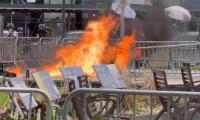As American President Donald Trump and Pakistani Prime Minister Imran Khan prepare to meet Monday (today), the duo is most likely to raise issues like counter-terrorism, defence, energy, the headway in Afghan peace process, trade and, of course, the long-standing American desire that Islamabad cracks down on militancy.
The Trump-Imran meeting is being deemed very important by many Western analysts as America has hinted it is planning to pull out of Afghanistan
On February 28, 2019, the “New York Times” had stated: “All American troops would withdraw from Afghanistan over the next three to five years under a new Pentagon plan being offered in peace negotiations that could lead to a government in Kabul that shares power with the Taliban. The rest of the international force in Afghanistan would leave at the same time, after having mixed success in stabilizing the country since 2001. The plan is being discussed with European allies and was devised, in part, to appeal to President Trump, who has long expressed skepticism of enduring American roles in wars overseas.”
The American media house has added: “The plan calls for cutting by half, in coming months, the 14,000 American troops currently in Afghanistan. It would task the 8,600 European and other international troops with training the Afghan military — a focus of the NATO mission for more than a decade — and largely shift American operations to counterterrorism strikes.”
As many of the above-mentioned issues are undoubtedly contentious, Islamabad must be hoping that some ice does melt so that the tension currently engulfing the Pak-US relationship could diffuse, though not many media pundits have predicted about resumption of American aid to Pakistan after Imran’s visit.
Having already hailed the arrest the arrest of the Lahore-based Pakistani religious cleric Hafiz Saeed on Twitter, the incumbent US head of state might seek the release of Dr. Shakil Afridi, the 57-year old Pakistani physician who had helped the CIA run a fake hepatitis vaccine programme in Abbottabad city to confirm Osama bin Laden's presence by obtaining DNA samples
Afridi was arrested at the Torkham border crossing while trying to flee the country days after the May 2, 2011 raid to get hold of bin Laden.
On May 23, 2012, Dr. Shakil Afridi, was sentenced to 33 years' imprisonment for treason initially, as it was believed that his information had led US Marines to launch a successful operation against bin Laden.
The American Senate's panel had then reacted by cutting $33 million in aid to Pakistan over the conviction of Afridi: $1 million for each of the 33 years of his sentence.
On May 31, 2012, U.S. authorities said that they sought clarification from Pakistan on the issue of Afridi's sentence and in September 2012, the U.S. State Department said that they would consider a prisoner exchange for Aafia Siddiqui, but Pakistan had reportedly refused the deal.
Afridi's lawyers had appealed against the verdict on June 1, 2012, and on August 29, 2013, his sentence was overturned and a retrial ordered.
In mid-November 2013, he was charged with murder in regard to the death of a patient he had treated eight years previously.
(References: the New York Times, the Associated Press, the CNN, the Reuters, the AFP, the Geo News, the Times of India and Fox News etc).
It, however, remains to be seen if Pakistani Premier Imran Khan also presses for the release of 47-year old Neuroscientist Dr. Aafia Siddiqui, who was arrested In Afghanistan by the US forces in July 2008.
She was hospitalized, and treated; then extradited and flown on August 4, 2008 to the United States, where in September 2008, she was indicted on charges of assault and attempted murder of a US soldier in the police station in Ghazni—charges she had vehemently denied.
After 18 months of detention, the Karachi-born Aafia Siddiqui's trial had begun in New York City on January 19, 2010.
She was consequently convicted on February 3, 2010 and later sentenced to 86 years in prison.
Dr. Aafia was found guilty of attempted murder, armed assault, for using and carrying a firearm, and of assaulting US officers and employees.
During the sentencing hearing, which lasted one hour, Aafia spoke on her own behalf.
On the trade and business front, it is still unclear if Trump would offer any olive branch to Pakistan.
It is imperative to note that the total (two way) goods trade between the United States and Pakistan had rested at $6.6 billion during 2018.
Pakistan is currently the 56th largest goods trading partner of United States.
While US exported goods worth $2.9 billion; it imported products worth $3.7 billion. Therefore, the U.S. goods trade deficit with Pakistan was $783 million in 2018.
Imran and Trump are scheduled to meet twice during Pakistani Premier's three-day visit to the United States.
The first meeting would, of course, be held at the historic 110-year old Oval Office in the White House.
Media has reported Trump would escort Imran while he tours the White House, which was designed and constructed by architect James Hoban between 1792 and 1800.
John Adams became the first US President to occupy this building in November 1800.
During the 1812 War, the mansion was set ablaze by the British Army, destroying the interior and charring much of the exterior.
The "National Geographic" magazine had once reported: "White House includes: six stories and 55,000 ft2 (5,100 m2) of floor space, 132 rooms and 35 bathrooms, 412 doors, 147 windows, 28 fireplaces, eight staircases, three elevators, five full-time chefs, a tennis court, a (single-lane) bowling alley and a movie theater. Then, there is a jogging track and a swimming pool. It receives up to 30,000 visitors each week."
Coming to the “Oval Office,” it was opened in 1909.
The President’s room features three large south-facing windows behind the president's desk, and a fireplace at the north end. It has four doors.
According to the White House Historical Association and various US media outlets, American Presidents generally decorate the office to suit their personal taste, choosing new furniture, new drapery, and designing their own oval-shaped carpet to take up most of the floor.
The carpet of the Oval Office bears the Seal of the President.
President Harry Truman's Oval carpet was the first to incorporate the Presidential seal.
The modern Oval Office was in 1933 by President Franklin Delano Roosevelt, who was physically disabled and used a wheelchair.
Since he wanted more privacy and easier access to his official residence inside the White House, he therefore redesigned the Oval Office.
Rather than a chandelier or ceiling fixture, the room is illuminated by light bulbs hidden within the cornice that "wash" the ceiling in light
As part of her overall restoration of the White House, First Lady, Jacqueline Kennedy, had a redecoration of the Oval Office begun on November 21, 1963, when she accompanied President John F. Kennedy on a trip to Texas.
The next day, November 22, a new carpet was installed just as the Kennedys were making their way through Dallas and the president was assassinated.
A very unique piece of furniture within the Oval Office is the "Resolute Desk."
It was so named because it was made from the timbers of the British frigate "HMS Frigate"
The ship had been frozen in Arctic Ocean and abandoned.
It was later found and freed by American seamen. It was refurbished and presented as a gift from the United States to Queen Victoria in 1856. When the ship was decommissioned from the British Navy in 1879, Queen Victoria had ordered twin desks made from its timbers, keeping one and presenting the other as a gift to American President Rutherford Hayes in 1880.
President William Howard Taft was the first to use the Oval Office, which was designed by architect Nathan Wyeth.
A representational image of an immigrant holding a Canadian flag. — X/@CitImmCanada/FileIslamabad: A delegation of...
A photograph of students appearing for an exam. — AFP/FileRawalpindi:The first annual intermediate examination for...
This image shows the logo of the Ministry of Human Rights. — APP/FileIslamabad: Ministry of Human Right’s Helpline...
Deputy Commissioner Islamabad, Irfan Memon can be seen in this image. — Facebook/Office of the Deputy Commissioner,...
This representational image shows a little plant. — Unsplash/FileRawalpindi: Director General , Parks and...
Students in a school in Islamabad can be seen attending a class on October 12, 2023. — Facebook/Federal Directorate...







